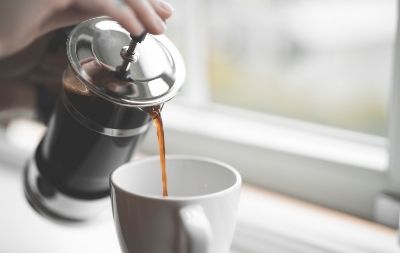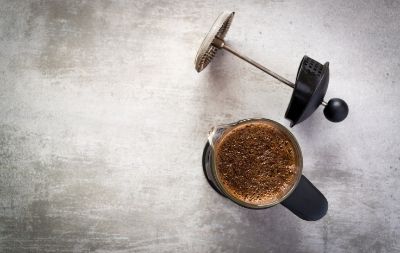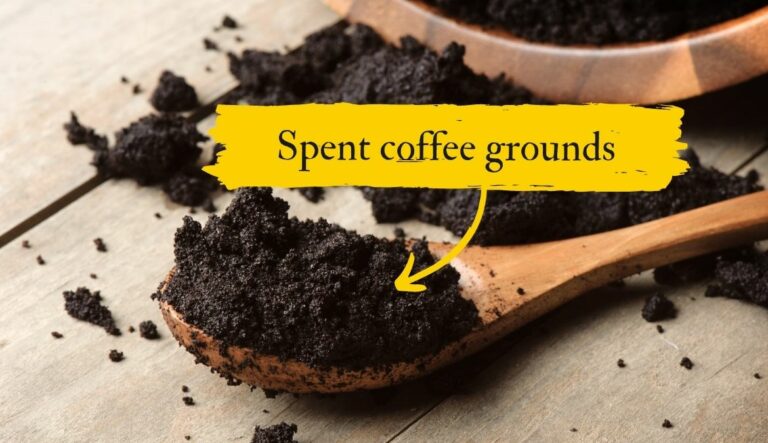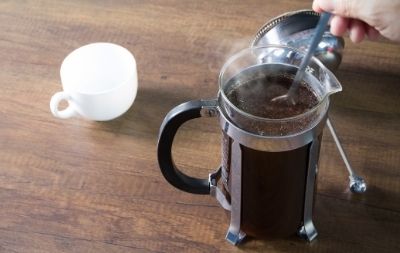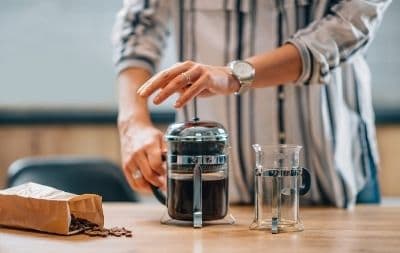
The other day I was excited to start my day with a tasty cup of French Press coffee. Unfortunately, my brew turned out a little watery and tasteless despite using a considerable amount of grounds. I did a little research and found out why.
Why is my French Press coffee watery? The most common reason is because the beans are ground too coarsely. It’s also possible that you’re not steeping it long enough or that you’re not stirring the grounds after pouring water into the French Press.
Here are some adjustments you can try in order to brew a less watery French Press.
1. Increase your steeping time
French Press coffee will taste watery if the grounds don’t steep long enough in water. This is because too few of the organic compounds are being extracted from the coffee beans into water.
A longer extraction time will cause more of these compounds to dissolve in your beverage, giving it a stronger taste.
Most people recommend steeping French Press coffee for four minutes. Consider adding an extra 30-60 seconds to your next brew if your current brew time is less than four minutes.
If your brew time is already longer than four minutes, try one of my other recommendations, such as adding more grounds.
2. Add more grounds
Generally speaking, you can increase the amount of extraction by adding more grounds to your French Press. The more grounds there are, the more flavor potential. However, this is only true if you are using grounds with the same grind density.
Here’s what I mean:
Specifically, add a greater weight of grounds
The most accurate way to produce a consistent flavor is to measure the weight of your coffee grounds instead of the volume of scoops you put in. The volume will vary from one batch of beans to the next depending on how coarsely they are ground.
So I recommend using a coffee scale if you want to be exact. Otherwise, you can simply try adding an extra scoop next time.
What ground-to-water weight ratio should you use for French Press coffee?
I recommend starting with a 1:15 ground-to-water ratio to start and then adjusting up or down based on your preference. This means you would use 10 grams of coffee grounds for every 150 grams of water.
The standard short coffee is 8 ounces, which would be about 226 grams of water. This means you would add 15 grams of coffee grounds.
For a larger 10 ounce mug, which is 283 grams, you would use 19 grams of grounds.
3. Use more finely ground beans
Coarsely ground coffee beans are often a cause of watery French Press coffee. The grind size determines how quickly organic compounds can be extracted from the coffee beans.
This means that even if you add the correct amount of grounds and brew for the correct amount of time, a coarse grind may not extract enough flavor and will produce a watery beverage.
Surface area is the reason for this. A greater surface area allows for a greater extraction rate. More finely ground beans have more surface area.
Next time you make a cup, try grinding your beans more finely.
4. Create turbulence by stirring the grounds
Another way to prevent watery French Press coffee is to try stirring your grounds after pouring in your water. This is referred to as turbulence and allows the grounds to make contact with the hot water on all surfaces.
Think about it:
If you pour water over a mound of coffee grounds, the outer surfaces will get exposure to the water. When the grounds are fine and packed tightly, the inner grounds will make more contact with each other and less contact with water.
This will produce a watered-down beverage and will cause inconsistent flavor from one cup to the next.
How do you create turbulence in French Press coffee
Using a spoon, stir your coffee grounds after pouring water into your French Press. Stir for about 10 seconds until the grounds are fully exposed to the water. This increased surface area will increase the extraction rate into the water.
5. Increase your water temperature
Low water temperature can cause watery French Press coffee due to the beans being under-extracted. What happens is water molecules extract fats and acids, sugars and plant fibers from coffee beans, which then dissolve and add flavor to the beverage.
When water is too cold, it has less energy and more slowly extracts these compounds. Therefore, water temperature is important for extracting the right amount for your preferences.
On the other hand, water that is too hot can actually over-extract these flavors and make French Press taste bitter and astringent.
What is the right temperature?
According to the National Coffee Association, the ideal temperature for French Press coffee is between 195°F – 205°F, or 90°C – 96°C.
You can measure the temperature using a thermometer or with an electric kettle, such as the Bonavista Electric Kettle. If you don’t have a thermometer, simply bring your water to a rolling boil, take it off the heat and then let it sit for about one minute.
If your French Press coffee is on the watery side, try preparing your next cup with hotter water to ensure you’re extracting more from your grounds.

